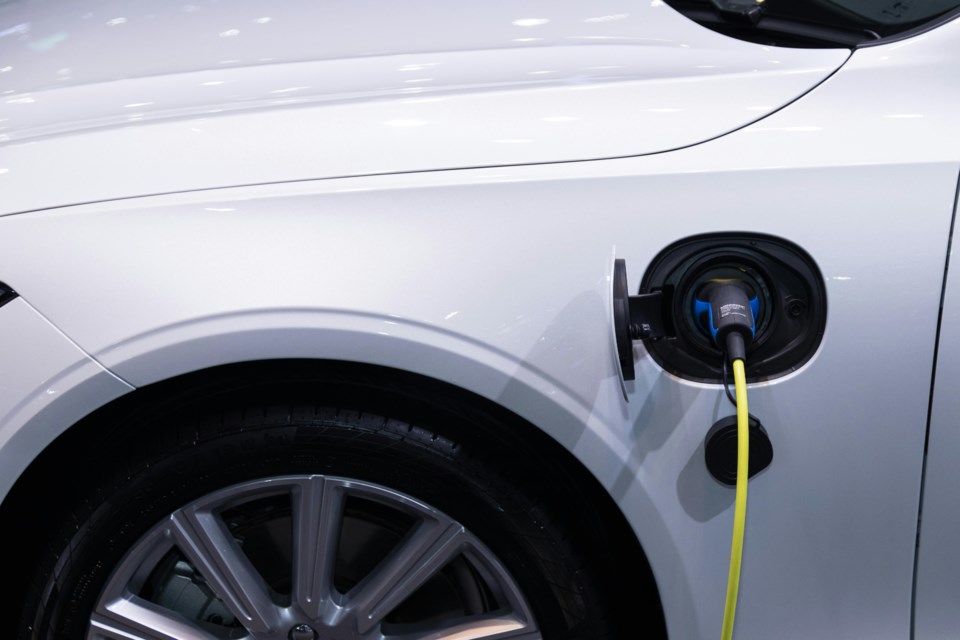The American President’s car always contains a fridge full of his blood. It’s there in case he gets in an accident, and needs blood, but still, that’s a weird liquid to be constantly driving around with, much weirder than the sun-baked Timmies double double that can usually be found sloshing around the cup holders in my car.
Another liquid you can find in my car is good old fashioned gasoline. I’m not an electric vehicle (EV) guy, I’m old school. Not that I wouldn’t drive a nice new Tesla or Karma Fisker. I just can’t afford one.
But I would definitely buy one of those sleek Chinese EVs, because they are crazy cheap. Cheaper than any car you can buy here. The BYD Seagull, the Chinese automaker’s flagship car, only costs about $14,600 but they don’t yet sell them in Canada. Unfortunately, there are no EVs for sale in Canada under $40,000 and most of the good ones start around $60,000.
The BYD lineup of EVs is considerably more affordable, but thanks to a bizarre decision by the feds, you’ll never be able to buy one, at least not with the $14,600 price tag. That’s because the federal government announced this week they are slapping a 100 percent tariff on Chinese EVs.
This is a bad idea, and I’ll get into why in a minute, but more annoying than the actual decision is the justification for the tariff.
In announcing the plan to double the cost of Chinese EVs in this country, the federal government claimed to have, “evidence proving China unfairly subsidizes its EV industry.”
That’s gotta be some kinda joke. For Canada, of all countries, to complain about a government subsidizing the EV industry, has got to be one of the most pot calling kettle black moments in history.
It was not even three months ago that Justin Trudeau and Doug Ford strolled into Niagara to brag endlessly about the $2.5 billion in subsidies they were providing to Honda for an EV battery factory in Port Colborne.
And that’s just one project. Between them, the federal government, and the governments of Ontario and Quebec have pledged a combined $53 billion in subsidies (they like to call them “incentives” and not subsidies) for the EV industry, spread across 13 different factory projects.
I’m not here to talk about whether those subsidies are good or bad, because I don’t know really, but what I do know is that if we are currently dishing out $53 billion in EV subsidies, we don’t exactly have the moral economic high ground to be claiming China is “unfairly subsidizing” its own EV industry.
Hypocritical subsidy accusations aside, the real kicker here is that our governments are endlessly prattling on about how we need to make the switch over to EVs to save the whales and the trees and the ozone and all that enviro-jazz, but at the same time, they’re removing from the market an EV that your average Canadian could afford.
We could all be breathing cleaner air, and saving the birds by buying affordable Chinese manufactured EVs, but instead the government plans to continue to price most of us out of the EV market.
That’s like a parent only ever giving their kids greasy fast food and ice cream then scolding them for getting fat. I don’t wanna ever again hear the government say I’m not doing my part to save the rainforest when they’re refusing to give me the tools to do so.
Whatever though, car emissions aren’t even that big of a deal in the grand scheme of things, so who cares about EVs anyway. Did you know that for modern cars – EV or regular gas-powered – that about 90 percent of all toxic vehicle emissions come from the tires wearing against the road and other non-exhaust sources?
Seems like if the government really wants to put a dent in enviro-toxins, it should be putting that $53 billion into subsidizing better tire technology, and be far less worried about Chinese EVs.
James Culic will never stop driving his 2009 Genesis. Find out how to yell at him at the bottom of this page or drive your Tesla to the nearest low-emission typewriter and send us a letter to the editor.



